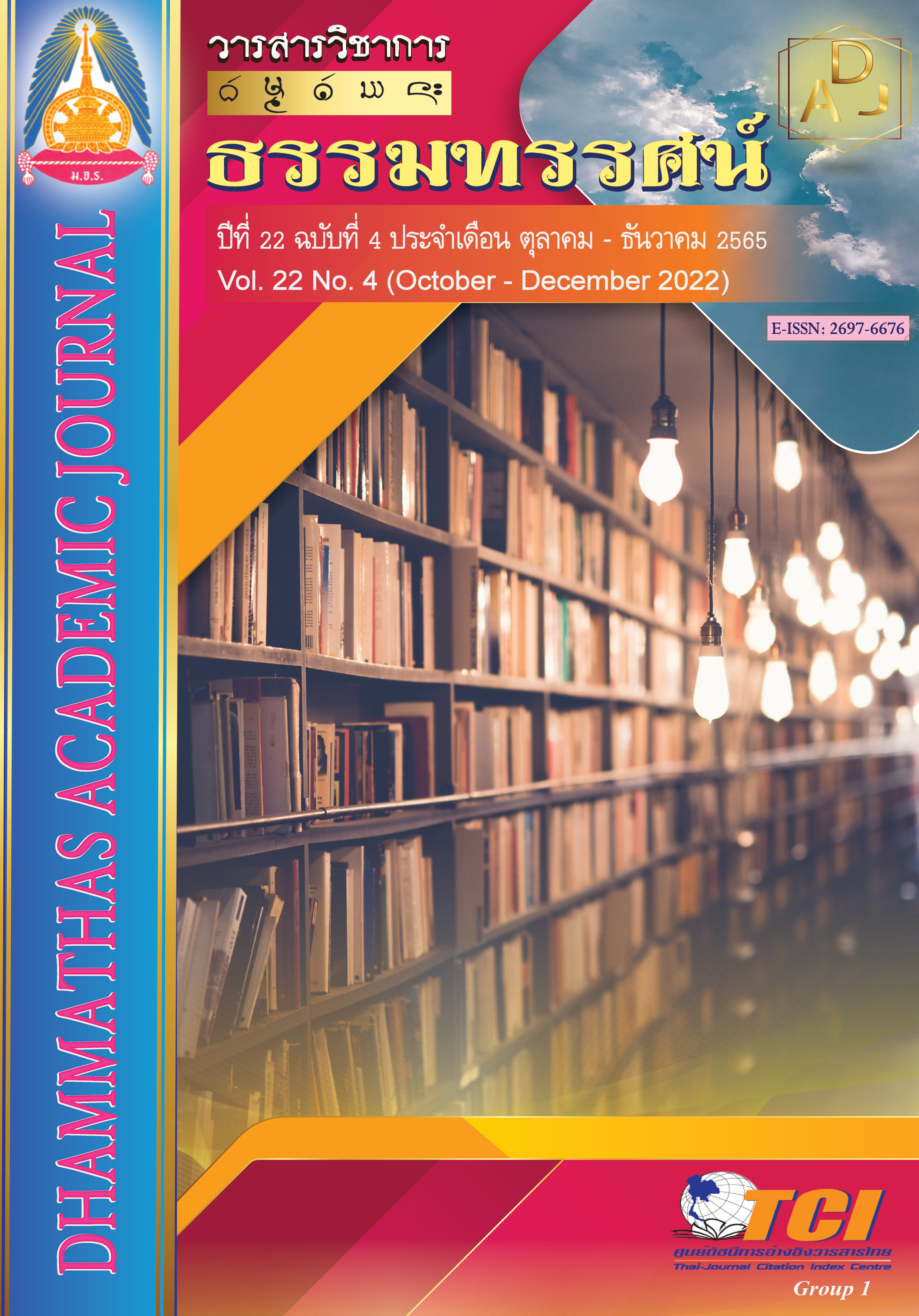Phi-Fa Dance in Disease Treatment of the People in Phon Thong Sub-District, Chiang Yuen District, Maha Sarakham Province
Main Article Content
Abstract
The objectives of this research were: 1) to study the Phi-Fa dance in the treatment of diseases; 2) to study the Phi-Fa dance in the treatment of people in Phon Thong Sub-district; 3) to analyze the Phi-Fa dance in the treatment of diseases of the Phon Thong Sub-district people. This study was carried out by means of the qualitative research. The obtained data were presented by Descriptive Analysis.
The research results were as follows:
1. The Phi-Fa dance in the treatment of disease started from Lan Xang Kingdom. Phi Fa is the ghost king with supreme authority. He is the one who can quench suffering and can help human beings who are in trouble. As for the ghosts that come to make people sick namely, ancestral spirits, Rai-ghosts and Na-ghosts etc. The cause of illness is infringements on ghosts. Healing is done by inviting the spirits to possess ‘Rang-Throng’ and ask about the cause of the illness and how to treat it.
2. The Phi-Fa dance in the treatment of diseases. People who are sick cannot communicate with the spirits that are causing them illness. Therefore, they use ‘Mo Lam’ to communicate instead but ‘Mo Lam’ is unable to contact that ghost directly. Mo Lam then contacted through Phi-Fa ghosts. For the treatment of the sick by inviting the ghost ‘Phi-Fa’ to possess in ‘Rang Throng’ in order to ask which ghosts cause sickness. After that, Phi-Fa will summon the ghost that makes the sick person to ask. Then, Phi-Fa will tell ‘Mo Lam’.
3. The Phi-Fa dance in the treatment of diseases: there are philosophical dimensions as follows: 1) in the metaphysical dimension, it is considered that Phi-Fa actually exists in the mental state; 2) in the epistemological dimension, the existence of Phi-Fa can be known through Rang-Throng; 3) in ethical dimension, the belief in the existence of Phi-Fa leads to the construction of the Phra-Phum Shrine, worship, sacrifice, and finally, it leads to practice until it has become the culture and tradition of the Isan people and the Phon Thong people to this day.
Article Details

This work is licensed under a Creative Commons Attribution-NonCommercial-NoDerivatives 4.0 International License.
เพื่อให้เป็นไปตามกฎหมายลิขสิทธิ์ ผู้นิพนธ์ทุกท่านต้องลงลายมือชื่อในแบบฟอร์มใบมอบลิขสิทธิ์บทความ ให้แก่วารสารฯ พร้อมกับบทความต้นฉบับที่ได้แก้ไขครั้งสุดท้าย นอกจากนี้ ผู้นิพนธ์ทุกท่านต้องยืนยันว่าบทความ ต้นฉบับที่ส่งมาตีพิมพ์นั้น ได้ส่งมาตีพิมพ์เฉพาะในวารสาร วิชาการธรรม ทรรศน์ เพียงแห่งเดียวเท่านั้น หากมีการใช้ ภาพหรือตารางของผู้นิพนธ์อื่นที่ปรากฏในสิ่งตีพิมพ์อื่นมาแล้ว ผู้นิพนธ์ต้องขออนุญาตเจ้าของลิขสิทธิ์ก่อน พร้อมทั้ง แสดงหนังสือที่ได้รับการยินยอมต่อบรรณาธิการ ก่อนที่บทความจะได้รับการตีพิมพ์References
บุญยงค์ เกศเทศ. (2540). บูชาพญาแถน. กรุงเทพฯ: คุรุสภาลาดพร้าว.
พระยาอนุมานราชธน. (2515). ชาติ ศาสนา วัฒนธรรม. กรุงเทพฯ: บรรณาคาร.
พระอริยานุวัตร เขมาจารี. (2536). คติความเชื่อของชาวอีสาน. (พิมพ์ครั้งที่ 4). กรุงเทพฯ: จุฬาลงกรณ์มหาวิทยาลัย.
ยุทธภัณฑ์ เตชะแก้ว. (2540). พิธีกรรมและระบบความเชื่อการล้าผีฟ้าในภาคอีสาน. (วิทยานิพนธ์ศึกษาศาสตรมหาบัณฑิต). เชียงใหม่: มหาวิทยาลัยเชียงใหม่.
ราชบัณฑิตยสถาน. (2542). ตำนานผีไทย. กรุงเทพฯ: สำนักงานราชบัณฑิตยสภา.

